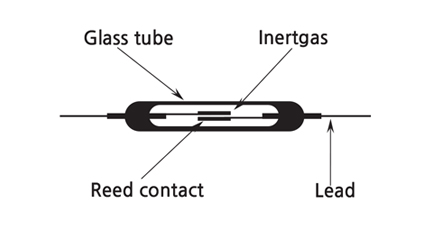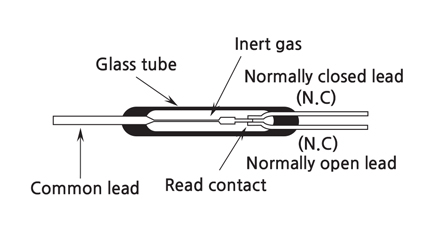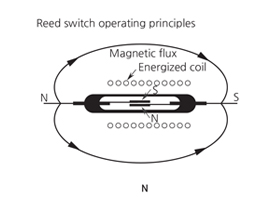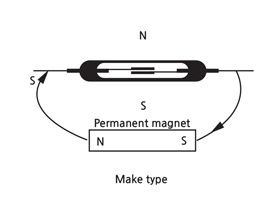
 PRODUCTS
PRODUCTS  Reed Swiches
Reed Swiches
DAE KWANG
PRODUCTS
dae kwang products

 PRODUCTS
PRODUCTS  Reed Swiches
Reed Swiches
Reed Swiches
Reed Swiches
GENERAL DESCRIPTION
The reed switch was invented by Dr. W. B. Ellwood at Bell Telephone Laboratories in 1936. The first application was made during 1938 when the reed switch was used as a selector switch in coaxial carrier equipment. later, improvements of the reed switches were made in parallel with the development of the telecommunications technology. At the same time, the advantages of reed switches such as the speedy response time, hermetically sealed contacts,compact size and long mechanical life have contributed greatly to the development of telecommunications technology. From 1956, when research and development on reed switches began in japan, innovations have been made in improving contact performance,reducing overall size, improving manufacturing methods and reducing manufacturing cost. In addition to applications in switching system, broad applications have been developed as sensors and controllers in automobile electrical devices, reed relays, and other instruments of various types. Our reed switches of extremely superior quality are manufactured based on our own original technology for deactivating contact surfaces,high performance automatic sealing equipment and contact resistance measurement technology which uses magnetic flux scanning tests(FS method) In particular, our process for deactivating contact surfaces takes the fatal problem of the conventional rhodium contact reed switch and suppresses increases in contact resistance due to organic contamination. Thus, it became possible to manufacture reed switches with stabilized contact resistance. This original technology was awarded the highest award(Schneider Award) at the 21st Annual National Relay Conference. Furthermore, we received the schneider Awards at the 36th and 38th Annual National Relay Conferences for research into reed switch contact phenomena. Our engineering and technology capabilities are evaluated highly.
Reed Switch Characteristics
1 Reed switches are hermetically sealed within a glass tube with inert gas do not receive any influence from the external atmospheric environment.
2Quick response because of small mass of moving parts.
3The structure comprises the operating parts and electrical circuits arranged coaxially. Reed switches are suited to applications in radio frequency operation.
4 Reed switches are compact and light weight.
5Superior corrosion resistance and wear resistance of the contacts assures stable switching operation and long life.
6With a permanent magnet installed, reed switches economically and easily become proximity switches.
Applications
-
Proximity switch
Temperature detector
Gasoline tank volume monitor
Cargo handling equipment
Float switch
Toys
Facsimile
Leisure products
Hydraulic pressure equipment
Consumer electronc equipment
Pressure detection equipment
Security equipment
Machine tools
-
Rotation detector
Various rotation detectors
Tape deck automatic stop circuit
Automobile electronic circuit
-
Kep switch
Data terminal equipment
Automatic balance
Computer I/O circuits
Electronic calculators(keyboards)
-
Switching system
Answer phone
Electronic switching system
-
Automation
Ordinary control system
Automatic measuring equipment
Plant system control
Traffic comtrol system
Process control
-
Inspection equipment
Various types of digital equipment
Subassembly for synchronous and other types of equipmnet
-
Others
Digital circuit
Radio frequency relay
Data logger
Various special purpose relays
Analog circuit
Transmission equipment
Radio equipment
Broadcasting equipment








